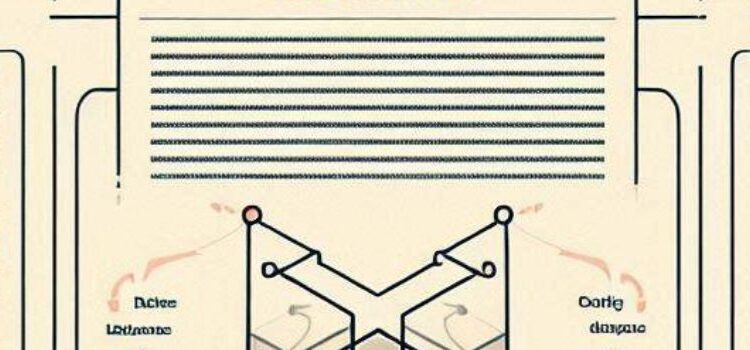How to Respond to Reviewer Comments on a Scientific Article
Publishing scientific articles in peer-reviewed journals is a rigorous process that does not end with the submission of the manuscript. One of the most critical—and often most challenging—stages is responding to reviewer comments. This step not only determines whether the article will be accepted but also reflects the author’s attitude toward academic critique and their ability to engage in scientific dialogue. Knowing how to respond effectively to reviewers’ observations is an essential skill in any research career, and mastering it can mean the difference between rejection and publication.
Understanding the Purpose of the Peer Review Process
Before drafting a response, it is essential to understand the logic behind peer review. Reviewers, as anonymous subject-matter experts, are not obstacles but allies of knowledge. Their role is to identify weaknesses, ambiguities, or gaps in the manuscript that may compromise its clarity, rigor, or impact. Responding with a defensive or dismissive tone is therefore counterproductive. The most constructive approach is to adopt a collaborative mindset, viewing the reviewers’ feedback as an opportunity to enhance the manuscript.
Read Carefully and Categorize the Comments
Once the editorial decision and comments are received, it is wise to read everything thoroughly before reacting. It’s common to feel frustrated or overwhelmed by harsh criticism or extensive revision requests, but a hasty response can lead to strategic mistakes. A practical method is to categorize the comments into three groups: those that can be addressed easily, those requiring substantial revisions, and those perceived as inaccurate or unjustified. This initial classification helps organize the revision process and prioritize the work.
Maintain a Professional and Respectful Tone
Every response should be written in a respectful, academic, and objective tone. Even if the author disagrees with a particular comment, the response should be supported by evidence and remain free from emotional or sarcastic language. Courtesy does not equate to submission—it reflects professionalism. In cases where a suggestion is rejected, it is important to explain the rationale clearly, grounded in data, methodology, or theoretical reasoning. Phrases such as “We appreciate the reviewer’s suggestion, but we believe that…” or “After careful consideration, we have decided to retain…” are effective ways to express disagreement constructively.
Be Systematic and Transparent in Your Response
The most effective structure for responding to reviewers involves reproducing each comment followed by a corresponding response. To facilitate the editor’s and reviewers’ work, it is helpful to specify the exact changes made, including page and section numbers. Some journals even encourage using different colors or font styles to distinguish between the comment, the response, and the revised text. This level of organization signals professionalism, commitment, and respect for the editorial process.
Go Beyond Literal Changes When Necessary
Not all reviewer comments can—or should—be addressed with literal edits. Often, a reviewer’s suggestion signals a deeper issue of understanding. In such cases, simply inserting a clarifying sentence might not be enough. It may be necessary to restructure paragraphs, expand discussions, or even rethink aspects of the study’s design. In other words, authors must read between the lines and accept that if a reviewer misunderstood a key point, the issue likely lies with the text rather than the reader.
Acknowledge Errors and Demonstrate Openness
Responding effectively does not mean defending every line of the original manuscript. A productive response reflects an open and thoughtful mindset. Acknowledging mistakes, rephrasing arguments, or simplifying complex sections is an integral part of the scientific process. Reviewers appreciate authors who are willing to recognize their manuscript’s limitations and make improvements. This attitude not only increases the likelihood of acceptance but also enhances the author’s credibility within the scientific community.
Focus on Form as Much as Content
Even a well-reasoned response can be undermined by poor writing or lack of organization. It is important to carefully proofread the response document, correct grammatical errors, eliminate redundancies, and ensure overall clarity. Additionally, generic phrases like “Thank you for your valuable comment” should be avoided unless followed by specific actions. Every expression of appreciation should be linked to a concrete revision or justification.
Think of the Editor as an Ally
The editor plays a relevant role in this process. Beyond coordinating the peer review, the editor is responsible for making the final publication decision. Therefore, the response should be addressed not only to the reviewers but also to the editor. A brief, clear, and professional cover letter summarizing the main changes and highlighting the author’s commitment to improving the manuscript can tip the balance in favor of acceptance.
A Process That Shapes the Scholar Responding to reviewers is not merely an editorial formality. It is also an exercise in critical thinking, academic writing, and intellectual humility. Every exchange with reviewers offers a valuable learning opportunity and contributes to academic growth. For this reason, mastering the art of responding to peer review should be a key component of every researcher’s professional development.
References
- Belcher, W. L. (2019). Writing your journal article in twelve weeks: A guide to academic publishing success. University of Chicago Press.
- Cargill, M., & O’Connor, P. (2013). Writing scientific research articles: Strategy and steps. Wiley-Blackwell.
- Day, R. A., & Gastel, B. (2012). How to write and publish a scientific paper. Cambridge University Press.
Cómo responder a los comentarios de los revisores en un artículo científico
La publicación de artículos científicos en revistas arbitradas es un proceso riguroso que no termina con el envío del manuscrito. Una de las etapas más críticas —y a menudo más desafiantes— es la respuesta a los comentarios de los revisores. Este paso no solo determina la posibilidad de que el artículo sea aceptado, sino que también refleja la actitud del autor hacia la crítica académica y su capacidad para participar en el diálogo científico. Saber responder adecuadamente a las observaciones de los evaluadores es una habilidad esencial en la carrera investigativa, y dominarla puede marcar la diferencia entre el rechazo y la publicación.
Comprender la función del proceso de revisión por pares
Antes de redactar una respuesta, es importante comprender la lógica del proceso de revisión por pares. Los revisores, en su rol de expertos anónimos, no actúan como obstáculos, sino como aliados del conocimiento. Su labor consiste en detectar debilidades, ambigüedades o vacíos en el manuscrito que podrían perjudicar su claridad, rigurosidad o impacto. Por ello, responder con actitud defensiva o descalificadora es contraproducente. La mejor forma de abordar este proceso es asumir una postura colaborativa, viendo los comentarios como oportunidades de mejora.
Leer con detenimiento y clasificar los comentarios
Una vez recibida la evaluación, lo recomendable es leer todos los comentarios sin reaccionar de inmediato. Es habitual experimentar frustración o desconcierto ante críticas severas o solicitudes extensas, pero una respuesta precipitada puede llevar a errores estratégicos. Un enfoque práctico es clasificar los comentarios en tres grupos: aquellos que pueden resolverse fácilmente, los que requieren cambios sustanciales y los que se perciben como injustificados o equivocados. Esta clasificación inicial permite planificar mejor las respuestas y organizar el trabajo de revisión.
Adoptar un tono profesional y respetuoso
Todas las respuestas deben redactarse con un tono académico, respetuoso y objetivo. Incluso si el autor no está de acuerdo con algún comentario, debe argumentar con evidencia y evitar cualquier lenguaje emocional o irónico. La cortesía no implica sumisión, sino profesionalismo. En los casos en que se rechace una sugerencia, es fundamental explicar con claridad las razones, siempre basadas en datos, metodología o fundamentos teóricos. Frases como “Agradecemos la sugerencia del revisor, pero consideramos que…” o “Tras un análisis detallado, hemos optado por mantener…” permiten expresar desacuerdo de forma constructiva.
Ser sistemático y transparente en la respuesta
La estructura más efectiva para responder a los revisores consiste en reproducir cada uno de sus comentarios, seguido de la respuesta correspondiente. Para facilitar la revisión, es útil resaltar los cambios realizados en el manuscrito, indicando la sección y el número de página en que se encuentran. Algunas revistas incluso sugieren usar diferentes colores o tipografías para distinguir entre el comentario, la respuesta y el texto modificado. Este nivel de organización demuestra seriedad, compromiso y respeto por el tiempo del editor y los revisores.
Reformular cuando sea necesario (más allá de lo literal)
No todos los comentarios requieren respuestas literales o cambios puntuales. A menudo, una observación indica un problema más profundo de comprensión. En esos casos, simplemente añadir una frase aclaratoria puede no ser suficiente: puede ser necesario reestructurar párrafos, ampliar una discusión o incluso repensar el enfoque del estudio. Es decir, hay que leer entre líneas y asumir que si el revisor no comprendió un punto clave, probablemente el problema sea del texto, no del lector.
Reconocer errores y mostrar apertura
Una respuesta eficaz no implica defender cada línea escrita, sino mostrar una actitud abierta y reflexiva. Admitir errores, reformular ideas o simplificar conceptos es parte del proceso científico. Los revisores valoran a los autores que saben reconocer sus debilidades y están dispuestos a mejorar su trabajo. Esta actitud no solo aumenta las probabilidades de aceptación, sino que fortalece la credibilidad del autor en la comunidad científica.
Cuidar la forma tanto como el contenido
Una respuesta bien argumentada, pero mal escrita o desorganizada, puede ser tan problemática como una respuesta débil. Por eso, es recomendable revisar cuidadosamente el documento de respuesta: corregir errores gramaticales, eliminar repeticiones y asegurarse de que la redacción sea clara. Asimismo, conviene evitar frases genéricas como “Gracias por su valioso comentario” sin una acción concreta asociada. Cada agradecimiento debe ir acompañado de una explicación o modificación que justifique su inclusión.
Pensar en el editor como un aliado
El editor desempeña un papel clave en este proceso. No solo coordina la revisión, sino que toma la decisión final sobre el manuscrito. Por eso, el documento de respuesta no debe estar dirigido exclusivamente a los revisores, sino también al editor. Una carta de presentación breve, clara y profesional, que resuma los principales cambios realizados y destaque la disposición del autor para mejorar su trabajo, puede inclinar la balanza a favor de la publicación.
Un proceso que también forma
Responder a los revisores no es solo un trámite editorial. Es también un ejercicio de pensamiento crítico, comunicación escrita y humildad intelectual. Cada intercambio con evaluadores es una oportunidad de aprendizaje y de crecimiento académico. Por ello, desarrollar esta competencia debe ser parte de la formación de todo investigador.




